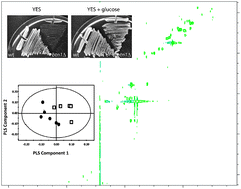Deletion of btn1, an orthologue of CLN3, increases glycolysis and perturbs amino acidmetabolism in the fission yeast model of Batten disease
Abstract
The neuronal ceroid lipofuscinoses (NCLs) constitute a

* Corresponding authors
a
Department of Biochemistry, University of Cambridge, Hopkins Building, Tennis Court Road, Cambridge, UK
E-mail:
jlg40@cam.ac.uk
Tel: +44 (0)1223 764948
b MRC Laboratory for Molecular Cell Biology, University College London, Gower Street, London, UK
c Johnson & Johnson PR&D, Turnhoutseweg 30, Beerse B-2340, Belgium
d Molecular Medicine Unit, UCL Institute of Child Health, University College London, UK
e Department of Genetics, Evolution and Environment, University College London, Gower Street, London, UK
f The Cambridge Centre for Systems Biology, University of Cambridge, Hopkins Building, Tennis Court Road, Cambridge, UK
The neuronal ceroid lipofuscinoses (NCLs) constitute a

 Please wait while we load your content...
Something went wrong. Try again?
Please wait while we load your content...
Something went wrong. Try again?
M. R. Pears, S. Codlin, R. L. Haines, I. J. White, R. J. Mortishire-Smith, S. E. Mole and J. L. Griffin, Mol. BioSyst., 2010, 6, 1093 DOI: 10.1039/B915670D
To request permission to reproduce material from this article, please go to the Copyright Clearance Center request page.
If you are an author contributing to an RSC publication, you do not need to request permission provided correct acknowledgement is given.
If you are the author of this article, you do not need to request permission to reproduce figures and diagrams provided correct acknowledgement is given. If you want to reproduce the whole article in a third-party publication (excluding your thesis/dissertation for which permission is not required) please go to the Copyright Clearance Center request page.
Read more about how to correctly acknowledge RSC content.
 Fetching data from CrossRef.
Fetching data from CrossRef.
This may take some time to load.
Loading related content
